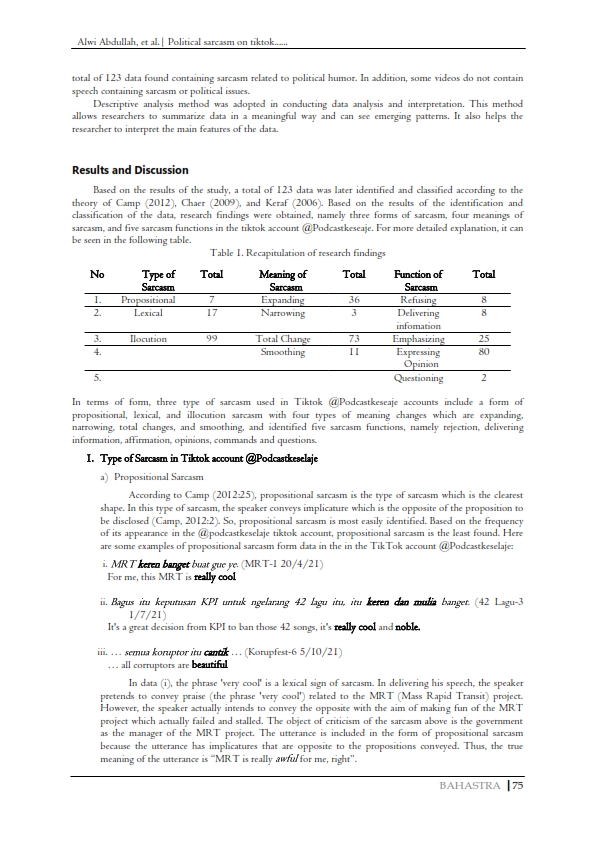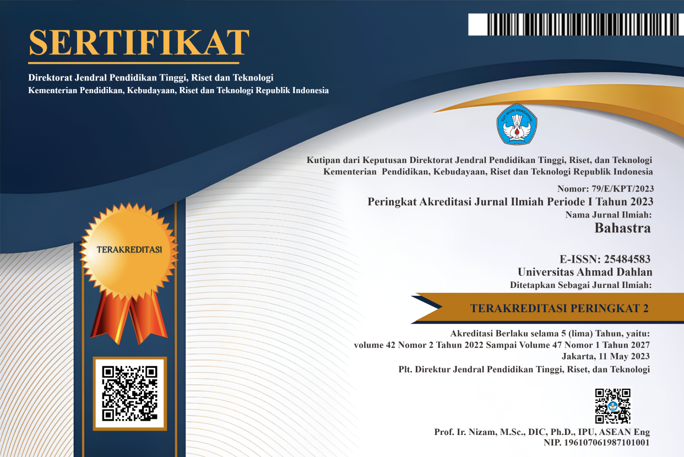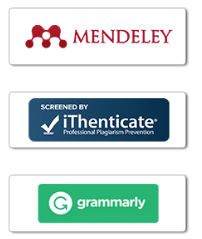Political sarcasm on tiktok account @podcastkeselaje
DOI:
https://doi.org/10.26555/bs.v42i1.62Keywords:
sarcasm, political humor, tiktok, pragmaticsAbstract
Recently, there has been apprehension in the society about expressing ideas, particularly on political concerns. As a result, public figures such as comedians tend to use sarcasm as their primary weapon in exposing political leaders' weakness, incompetence, or corrupt behavior, as well as government officials' actions. The goal of this research is to look at the form, meaning, and function of sarcasm on the TikTok account @Podcastkeseaje. All of the utterances said by the narrator or speakers in the video recording from the TikTok account @podcastkeselaje are used as data sources in this study. Indirect observation was used to obtain data, which was then followed by recording and note-taking techniques. The data were examined using Camp's (2012) theory for the form of sarcasm, Chaer's (2009) theory for the meaning of sarcasm, and Chaer's (2009) theory for the meaning of sarcasm.
References
Aditya, Z. F., & Al-Fatih, S. (2021). Indonesian constitutional rights: expressing and purposing opinions on the internet. The International Journal of Human Rights, 25(9), 1395–1419. https://doi.org/10.1080/13642987.2020.1826450
Camp, E. (2012). Sarcasm, pretense, and the semantics/pragmatics distinction. Nous (Detroit, Mich.), 46(4), 587–634. https://doi.org/10.1111/j.1468-0068.2010.00822.x
Chaer, A. (2009). Pengantar Semantic Bahasa Indonesia. Bandung: Rineka Cipta.
Colston, H. L. (2019). Using Figurative Language. Cambridge, England: Cambridge University Press.
Dadlez. (2011). Truly funny: Humor, irony, and satire as moral criticism. Journal of Aesthetic Education, 45(1), 1. https://doi.org/10.5406/jaesteduc.45.1.0001
Dagnes, A. (2012). A conservative walks into a bar: The politics of political humor (1st ed.). Basingstoke, England: Palgrave Macmillan. https://doi.org/10.1057/9781137270344
Gibbs, R. W., Jr. (1994). The poetics of mind: Figurative thought, language, and understanding. Cambridge, England: Cambridge University Press.
Hakim, R. N. (2021, May 6). Survei LP3ES: 63,1 Persen Masyarakat Puas dengan Kinerja Jokowi-Ma’ruf Amin. Kompas. Retrieved from https://nasional.kompas.com/read/2021/05/06/13113121/survei-lp3es-631-persen-masyarakat-puas-dengan-kinerja-jokowi-maruf-amin?msclkid=721c8432b88111ecb761331e06a5b307
Handayani, M. S., & Gerintya, S. (2018, October 18). Jerat UU ITE Banyak Dipakai oleh Pejabat Negara. Retrieved April 10, 2022, from Tirto.id website: https://tirto.id/jerat-uu-ite-banyak-dipakai-oleh-pejabat-negara-c7sk
KBBI. (2022). Sarkasme. Retrieved from https://kbbi.kemdikbud.go.id/entri/sarkasme.
Keraf, G. (2006). Diksi dan Gaya Bahasa. Jakarta: Gramedia Pustaka Utama.
Kemp, S. (2021, January 27). Digital 2021: the latest insights into the state of digital. Retrieved April 10, 2022, from We Are Social Australia website: https://wearesocial.com/au/blog/2021/01/digital-2021-the-latest-insights-into-the-state-of-digital/?msclkid=b3a5dcf2b87f11eca3fc677d365a0889
Lee, C. J., & Katz, A. N. (1998). The differential role of ridicule in sarcasm and irony. Metaphor and Symbol, 13(1), 1–15. https://doi.org/10.1207/s15327868ms1301_1
Norrick, N. R., & Spitz, A. (2008). Humor as a resource for mitigating conflict in interaction. Journal of Pragmatics, 40(10), 1661–1686. https://doi.org/10.1016/j.pragma.2007.12.001
Rahmi, A., & Adek, M. (2019, April). Joke and Its Relation to Students Grammar Mastery in EFL Learning. In 3rd Asian Education Symposium (AES 2018). Atlantis Press. https://doi.org/10.2991/aes-18.2019.106
Smith, E. (2013). Aristophanes’ Cloudcuckooland to Terry Pratchett’s Discworld: Comedy as social conscience. Comedy Studies, 4(1), 23–33. https://doi.org/10.1386/cost.4.1.23_1

Downloads
Published
Issue
Section
License
Copyright (c) 2022 Alwi Abdullah, Muhammad Adek; It Fernando Putra

This work is licensed under a Creative Commons Attribution-ShareAlike 4.0 International License.

1.jpg)






